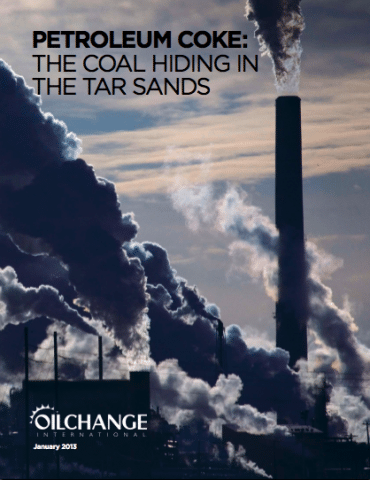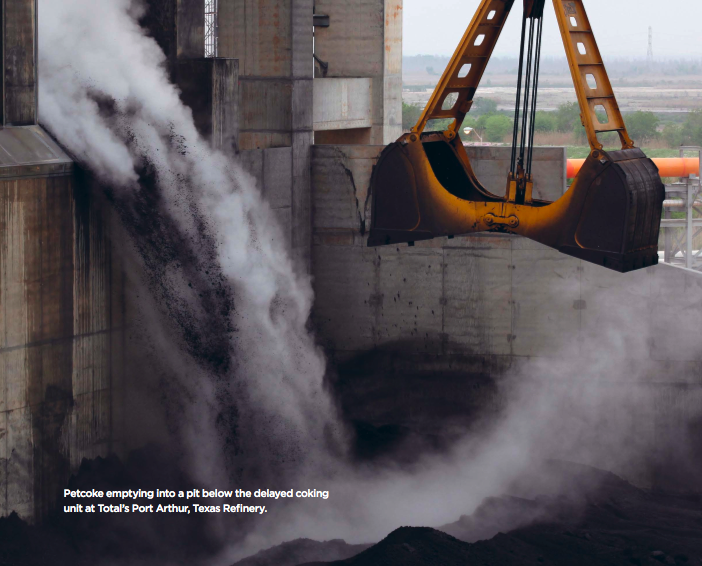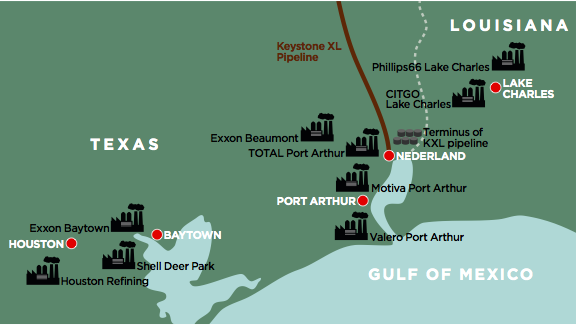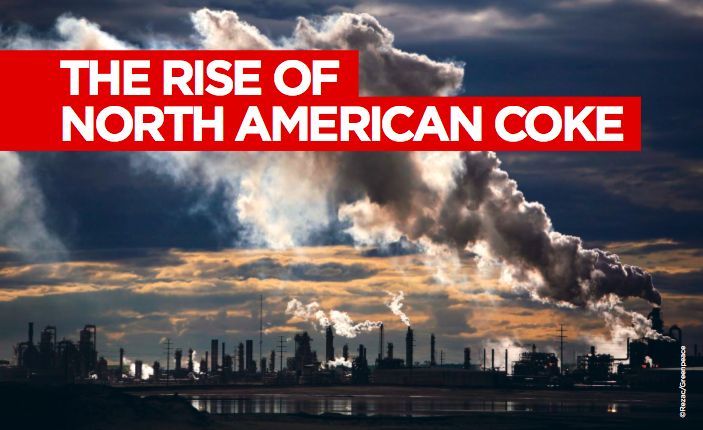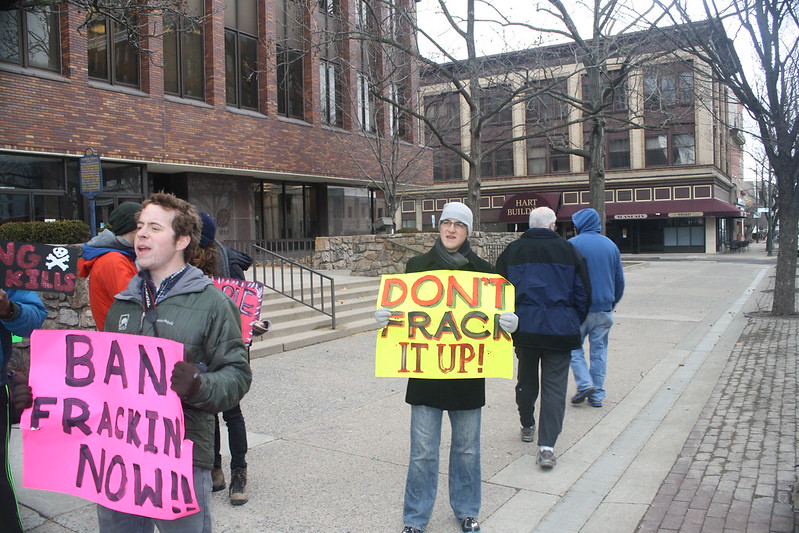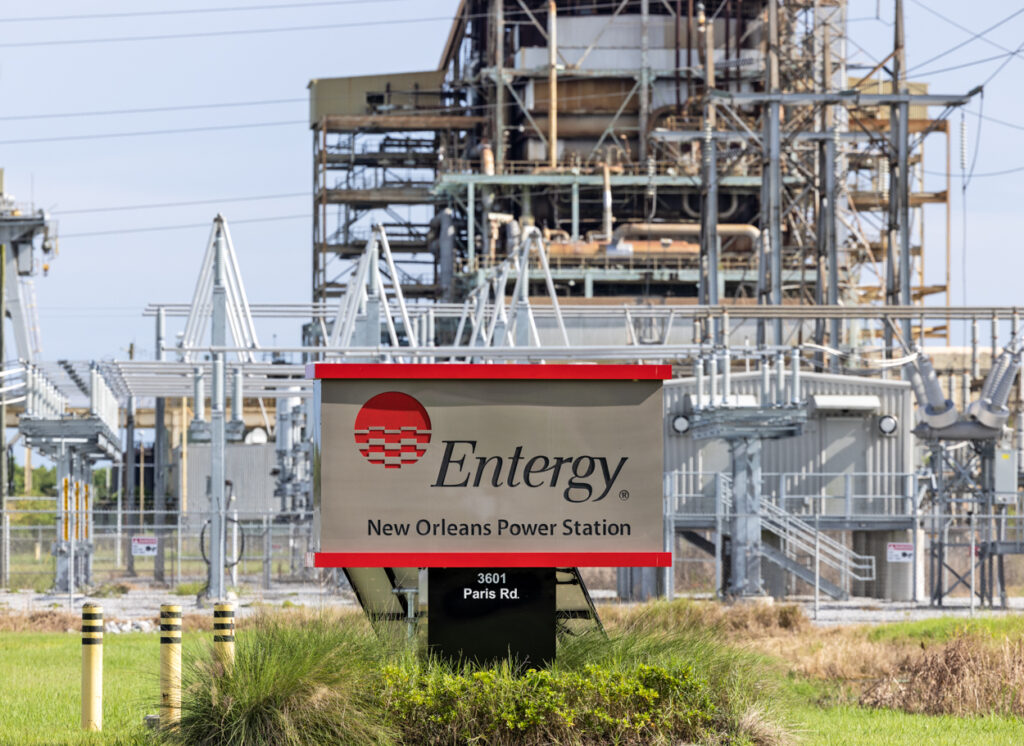Thanks to Alberta’s tar sands, coal-powered energy production just got cheaper, and dirtier.
That is largely due to an often overlooked byproduct of bitumen upgrading: petroleum coke. The byproduct, commonly referred to as petcoke, is derived from the excess heavy hydrocarbons necessarily processed out of bitumen in the production of lighter liquid fuels like gasoline and diesel. The leftover condensed byproduct, petcoke, bears a striking resemblance to coal, and is being integrated into coal power plants across the US and internationally, contributing a tremendous amount of carbon emissions to the tar sands price tag that has been previously unaccounted for.
That is, until the research group Oil Change International released a research report that calculates the use of petcoke in American energy generation increases the proposed Keystone XL Pipeline’s emissions by a staggering 13 percent.
The report, Petroleum Coke: The Coal Hiding in the Tar Sands, suggests that while groups like the European Commission use specific inputs to determine a ‘well-to-wheels’ analysis of tar sands emissions – which figures the unconventional fuel emits emissions 23 percent greater than conventional crude – such calculations do not account for petcoke and so only tell a portion of the story.
“Petcoke,” states the Oil Change website, “has even higher carbon emissions than already carbon-intensive coal, emitting between 5 to 10 percent more CO2 than coal per unit of energy produced. A ton of petcoke yields on average 53.6 percent more CO2 than a ton of coal.”
What is worse, as a byproduct petcoke is sold at a “to move” price, pushing the dirty fuel source into the market at a 25 percent discount to coal. Because petcoke undercuts the price of coal so significantly, the coal industry has begun to incorporate petcoke into its power generation.
“At the end of 2011 nearly 80 million tons (72.3 million metric tons of petcoke was stockpiled in Alberta. The stockpile is growing at the rate of about 4 million tons (4.4 million metric tons) a year.” Image located on page 20 of the report.
“Indeed industry analysts have shown that a typical 1 gigawatt coal plant can save around $120 million per year in fuel costs by blending petcoke with coal in their boilers. That sounds to us like a boon for coal-fired generators and a bad deal for cleaner fuels competing with coal in a tight market.”
The Petcoke Craze
The report’s introductory blog post by Lorne Stockman highlights some significant statistics on the relationship between tar sands production and petcoke.
• There is 24 percent more CO2 embedded in a barrel of tar sands bitumen than in a barrel of light oil.
• 15 to 30 percent of a barrel of tar sands bitumen can end up as petcoke depending on the upgrading and refining process used.
• Of 134 operating U.S. refineries in 2012, 59 are equipped to produce petcoke.
• U.S. refineries produced over 61.5 million tons of petcoke in 2011 – enough to fuel 50 average U.S. coal plants each year.
• In 2011, over 60 percent of U.S petcoke production was exported.
“Petcoke in the tar sands is turning American refineries into coal factories.”
“Keystone XL refineries are among the biggest petcoke factories in the world,” is the caption to this image, figure 3, found on page 17 of the report.
The Keystone XL refineries have a petcoke production capacity of 50,375 tons per day.
Because of this, the “Keystone XL will fuel five coal plants and thus emit 13 percent more CO2 that the U.S. State Departmet has previously considered.” The five coal plants would produce “16.6 million metric tons of CO2 each year.”
The “PetKoch” Connection
Oxbow Corporation, owned by lesser-known Koch brother William Koch (sibling of oil and gas magnates Charles and David Koch), is the largest petcoke trader in the world. The corporation is one of the largest donors to Republican Super PACs, with political contributions tallying at $4.25 million.
The company also spent $1.3 million on lobbyists in 2012 alone.
Oxbow ships “11 million tons of petcoke annually around the world primarily from the Gulf Coast to Asian, Latin American and European markets.”
The report states that “Oxbow’s biggest facility and primary laboratory and testing facility are located in Port Arthur, Texas, where the Keystone XL pipeline would terminate and where some of the biggest petcoke producing refineries in the world are located.”
Industry’s Downplay
Last week, TransCanada, the company currently building the southern leg of the Keystone XL pipeline, announced the pipeline’s construction was proceeding smoothly and without delay. This despite a prominent and ongoing protest along the route, with future sit-ins scheduled for Washington DC.
“We factor things like that into our planning,” Shawn Howard, a spokesman for the company told Reuters. “We’ve got a pipeline route that’s hundreds of miles long so if there are activities that take place on one property, our crews still have plenty of work to do.”
According to The Washington Post, the oil industry was quick to dismiss the findings of Oil Change International’s report.
TransCanada said the report contained “nothing new” and was merely “the latest attempt by professional activists who opposed Keystone XL to change the discussion.”
A statement issued by the company read, “Let’s be frank: this is not about the Keystone XL Pipeline, diluted bitumen, emissions or a substance that is in a particular blend of oil. It’s about a group that wants to end the use of fossil fuels entirely.”
Jack Gerard, president of the American Petroleum Institute, one of the most power oil and gas lobby groups in the U.S., had this to say: “It once again boils down to a political decision by the White House: will they follow what’s in the best interest of the country, or will they follow other political pressures?”
“It clearly is in the national interest, and that’s the only decision the president needs to make,” Gerard told The Washington Post, adding he saw carbon emissions as one of the “tangential issues to the conversation.”
The Keystone Conundrum
The Keystone XL pipeline will introduce a consistent stream of tar sands bitumen into the United States. The bitumen boom is creating a petcoke boom that is “an insidious aspect of tar sands production that is, until now, undocumented.”
The report adds, “to date, petcoke has been hidden in most discussions about the Greenhouse Gas (GHG) intensity of the tar sands.” That, crucially, includes discussions surrounding the Keystone XL.
If the pipeline is approved, “around 15,000 tons of petcoke per day will be produced from the bitumen in the dilbit it will deliver…That is over 50,000 tons of CO2 every day or over 18.3 million tons (16.6 metric tons) of CO2 a year.”
The reality of the rise of petcoke means that the tar sands are significantly worse for the environment than previously thought. And the growing dependence on petcoke-generated energy will only increase that carbon-burden for the forseeable future.
At the very least, these are not numbers we can afford to ignore any longer.
“With more than 300 billion barrels of recoverable tar sands bitumen still in the ground in Alberta and hundreds of billions of barrels of extra-heavy and heavy oils in reserves around the world, it is time we understood the full impact of exploiting these low quality, high impact hydrocarbons.”
The report traces the rise of petcoke energy and emissions through investments that have “transformed North America into the petcoke production center of the world.” Pg 18.
The Consumption Quandary
Petcoke use, in comparison to coal-generated energy production, is small at this stage, although the overall effect of discounted petcoke in the energy market is unknown at this point.
A number of negative consequences of increased petcoke consumption are likely, however, such as the lengthened life-span of coal-fired power power plants enabled by a steady stream of cheap petcoke. This in turn will assist in the continued suppression of large-scale investments in cleaner sources of energy in the U.S. and internationally.
While an in-depth consequential life-cycle analysis of tar sands production may enable us to make more precise estimations of the greenhouse gas impact of opening up this vast resource, it seems clear the impact is subject to the basic laws of economics. More supply lowers prices, increases demand and competes with cleaner alternatives that are fighting to achieve the economics of scale.
in addition, we must not forget that even if petcoke did replace coal consumption one-to-one and did not represent an increase in coal demand, which seems unlikely, its emissions are five to ten percent higher on a unit of energy basis. Petcoke is making coal-fired power generation more carbon intensive and cheaper at exactly the time that we urgently need low carbon solutions to energy production.
The report concludes:
considering tar sands emissions in their entirety must surely lead to the conclusion that we cannot possibly exploit all the recoverable tar sands bitumen. this in turn should highlight the urgent need for society to grapple with one of the most crucial and challenging questions of our time: Which fossil fuels should we leave in the ground and how do we manage the process?
Be sure to take a look through the entire report, which is thorough, informative and full of interesting visuals, graphs and images that bring this formerly obscure subject to light.
Subscribe to our newsletter
Stay up to date with DeSmog news and alerts


